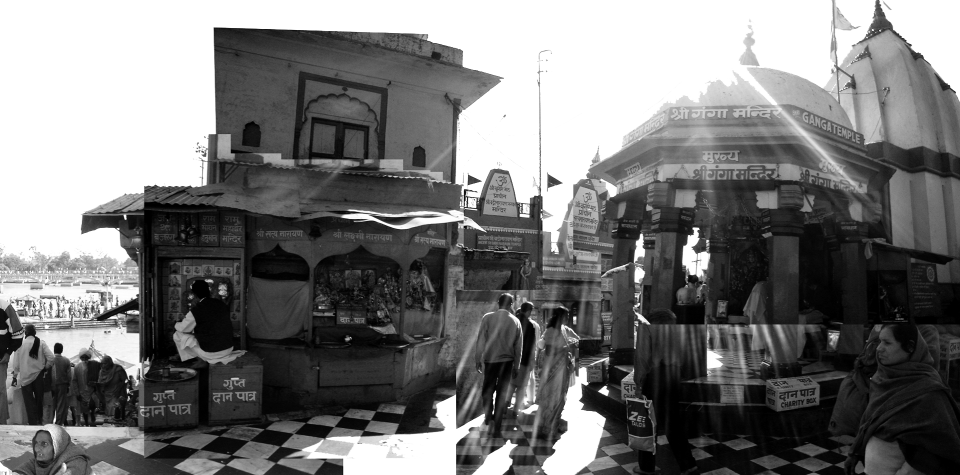Although there is no archetypal form for a crematorium, the cremation place is marked by a pavilion-like structure standing in open ground outside the city limits. However, in most cities today, these sites have been engulfed by urban growth, making the pavilion lose its symbolic significance.
- Traditionally, the cremation place is marked by a pavilion structure on river banks or open grounds on the fringes of the city. However, in most cities today, these pyres are encapsulated by growing cities, making them lose their phenomenological validity. The first gesture of this design was to create a large clearing by removing all existing structures and then elevating the plane isolated above the adjoining river and the buildings. The clearing looks out only in the direction of the river, resulting in a 'skewed', angled plan.
- Traditionally, the dead are carried on a specially constructed timber frame by the closest male relatives. These pall bearer carry the dead from their house to cremation grounds to the accompaniment of chants. The dead are now brought to the cremation grounds by motor vehicles. A cremation route is created from the entrance to the furnace chambers. One side of this route is bound by a wall that catches the changing light from the slit running through it. At certain times this light almost makes this wall look like a cloth billowing in the wind.
- The body is then ritually cleansed to symbolically pacify the remaining desires of the personality, which are said to remain even after the body dies… The procession pauses at the juncture of cremation route and the cremation chambers. Where the body is placed on a platform and holy water is symbolically sprinkled on it to signify the cleansing. This node is marked by a tree that always existed on this site.
- In the linear succession of events the funeral pyres occupy an intermediate position. Signifying the idea that death or any stage in life is not an end in itself. The funeral pyre is prepared in wood and more ritual are performed. The pyre is then lit by the husband or eldest son. The crematorium plan turns, abruptly, into the five furnace chambers, which are partially segregated by curved walls. The building at this point opens into the river-edge.
- All pay homage to the dead and condole the family. A pavilion connects the funeral chambers to the river. In this particular location, the chambers achieve a position where the five essential elements of the Hindu universe – Panchmahabhuttas – come together.

